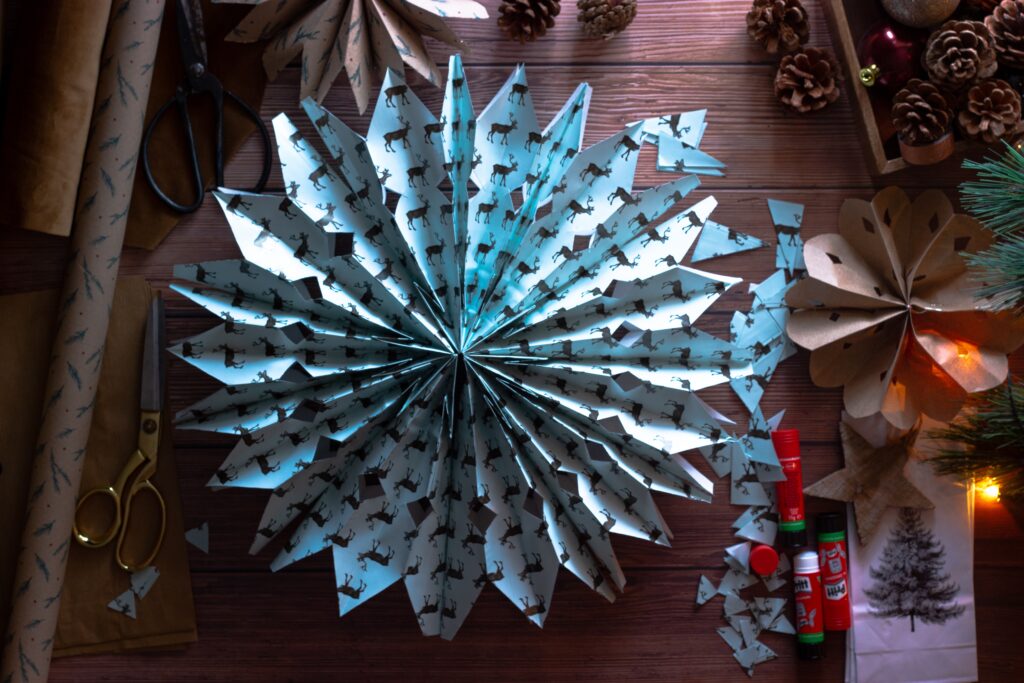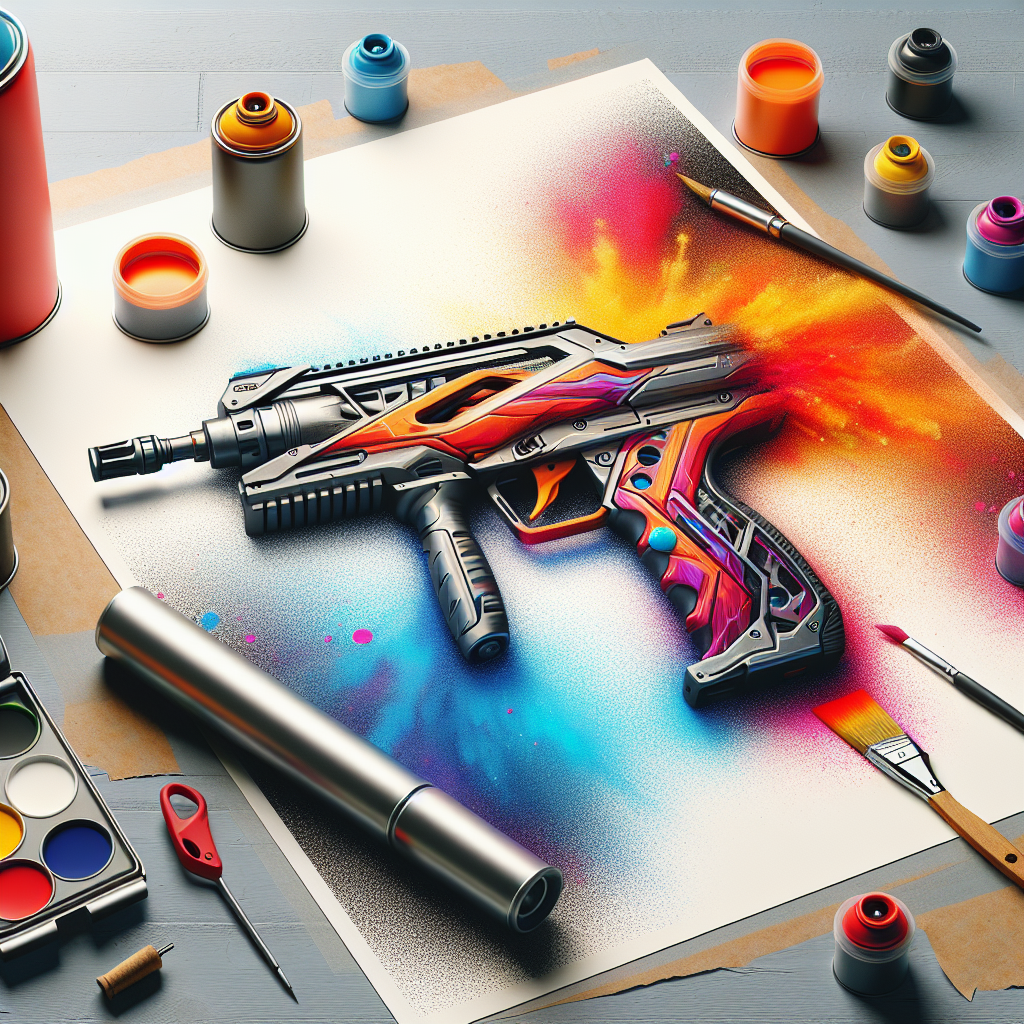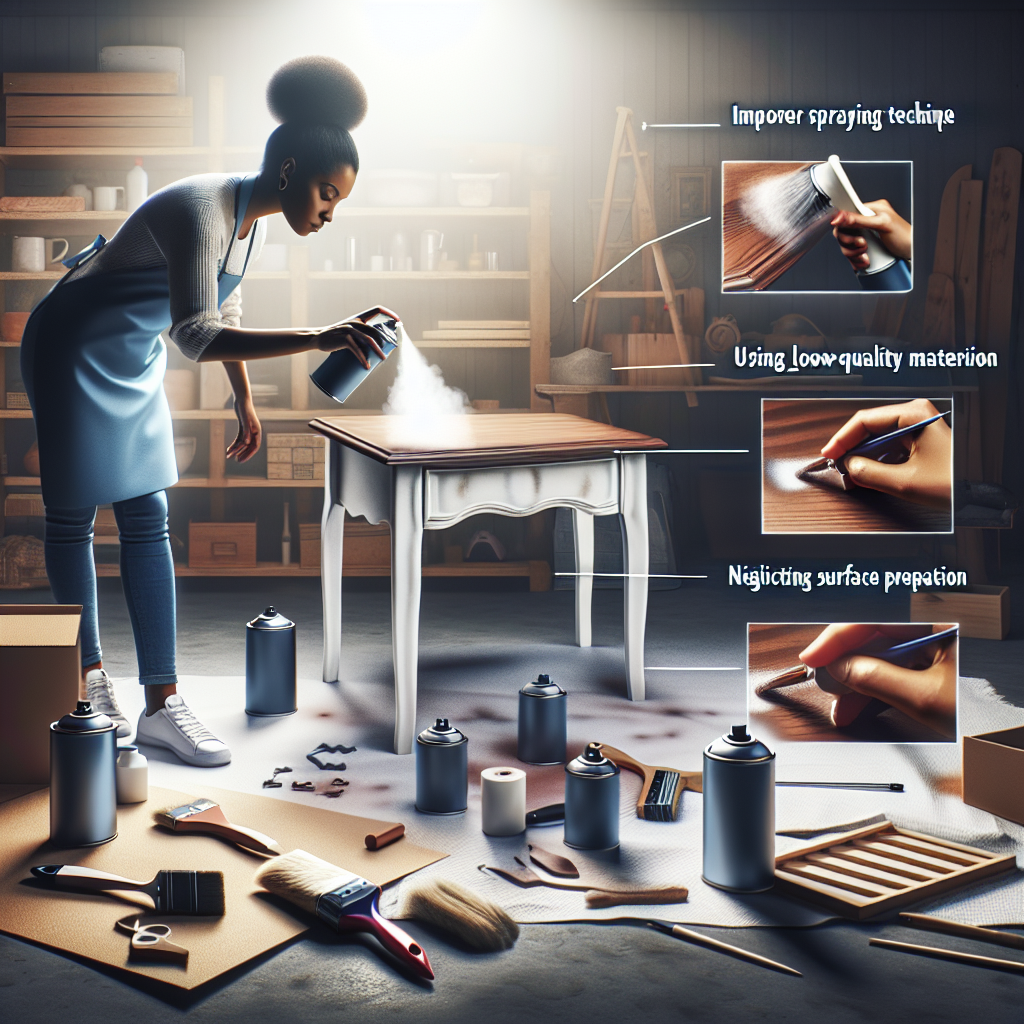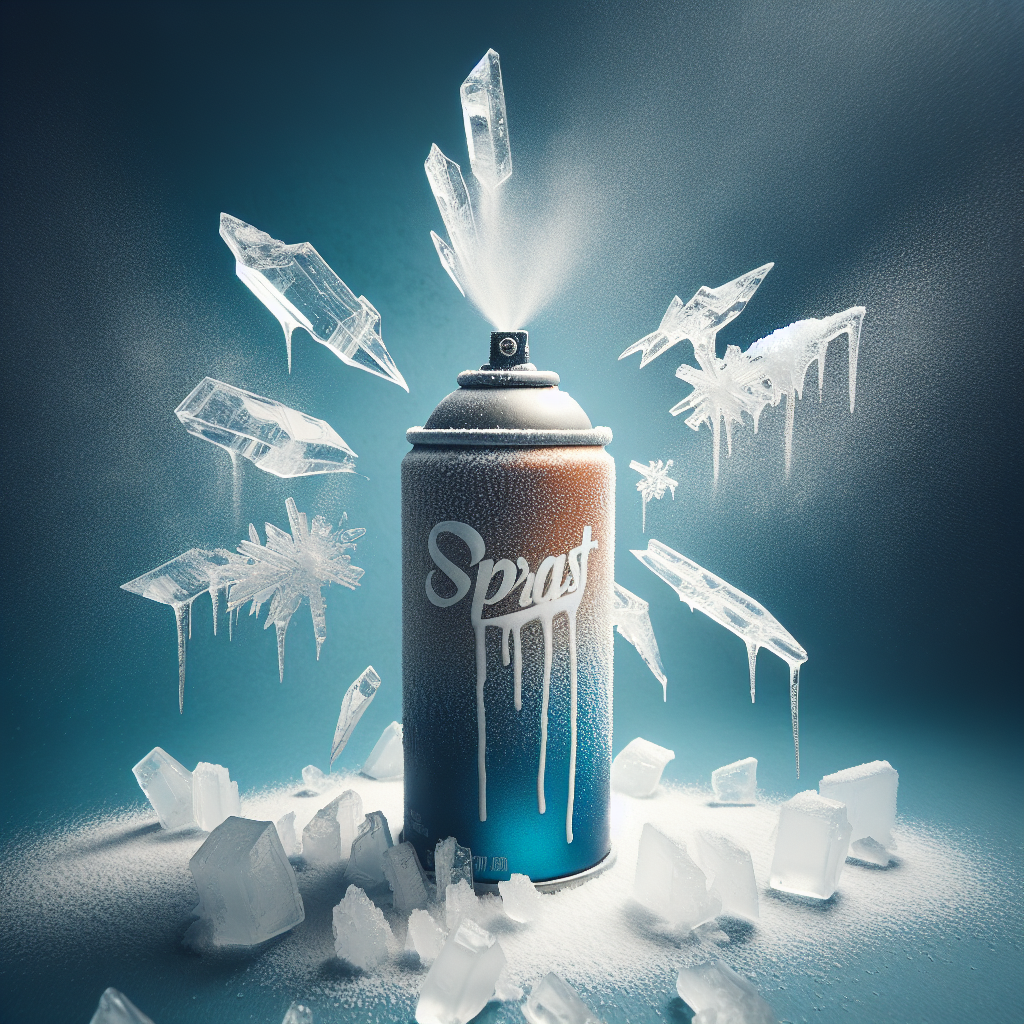Sprucing up your paintball gun with a fresh coat of paint can give it a whole new look and make you stand out on the field. However, knowing the proper techniques for spray painting your paintball gun is essential to achieving a professional and durable finish. In this article, you will discover step-by-step instructions on how to effectively spray paint your paintball gun, ensuring that it not only looks great but also maintains its performance and longevity. From preparation to finishing touches, these expert tips will guide you through the process, guaranteeing impressive results that will leave your opponents in awe.

This image is property of images.unsplash.com.
Understanding What is Spray Painting
Spray painting is a technique used to apply paint onto a surface using pressurized air to create an even and smooth finish. It is commonly used in the automotive industry, artistic projects, and even on paintball guns. By using this method, you can transform the appearance of your paintball gun and personalize it to suit your style and preferences.
Basics of Spray Painting
Before diving into the process of spray painting your paintball gun, it is essential to understand the basics of this technique. Spray painting requires a spray gun or aerosol can that contains paint and uses compressed air to atomize the paint particles. The atomized paint is then propelled onto the surface, creating a fine mist that adheres evenly to the object being painted.
Importance of Spray Painting Your Paintball Gun
Spray painting your paintball gun serves both aesthetic and protective purposes. By giving your paintball gun a fresh coat of paint, you can customize it to your liking and make it stand out on the field. Additionally, the paint acts as a protective layer, guarding against rust, scratches, and other elements that may damage the gun over time.
Types of Spray Paint Suitable for Paintball Guns
When choosing spray paint for your paintball gun, it is crucial to select a type that is suitable for use on firearms. Look for paints specifically designed for outdoor use, as they are formulated to withstand varying weather conditions. Additionally, opt for paints with durable and long-lasting finishes such as enamel or acrylic, which offer excellent adhesion and durability. Avoid paints that contain metallic flakes or textures, as these may interfere with the gun’s functionality.
Material Preparation
Proper material preparation is key to achieving a flawless paint job. By taking the time to gather the necessary tools and set up your workspace correctly, you can ensure a smooth and efficient painting process.
Choosing the Right Spray Paint
Selecting the right spray paint for your paintball gun is crucial for a successful outcome. Consider the color and finish you desire, as well as the durability and compatibility of the paint with your gun’s material. Look for paint brands that are known for their quality and reliability, and ensure that the paint is suitable for use on the specific type of paintball gun you own.
Gathering Necessary Tools
Before starting the painting process, gather all the necessary tools and materials. These may include:
- Respirator mask: Protects you from inhaling harmful fumes and particles.
- Safety glasses: Shields your eyes from paint overspray and potential hazards.
- Sandpaper or sanding block: Used to smooth the surface of the gun before painting.
- Masking tape: Helps protect areas of the gun that you do not want to paint.
- Drop cloths or plastic sheets: Cover your workspace to prevent paint from settling on unwanted surfaces.
- Gloves: Protect your hands from paint and chemicals.
Setting Up Your Workspace
Creating a suitable workspace is essential for a successful spray painting project. Choose a well-ventilated area, such as a garage or outdoor space, to avoid the buildup of fumes. Cover the surrounding area with drop cloths or plastic sheets to protect it from overspray. Ensure there is sufficient lighting, allowing you to see the gun clearly and identify any imperfections during the painting process. Take caution to keep the workspace organized and free from debris, as this can affect the quality of the paint job.
Safety Precautions
Safety should always be a top priority when spray painting. By taking the necessary precautions, you can protect yourself, prevent accidents, and ensure a smooth painting process.
Wearing Appropriate Clothing
When preparing to spray paint your paintball gun, choose clothing that covers your entire body, including long sleeves and pants. This helps protect your skin from any overspray or potential contact with paint and chemicals. Avoid wearing loose-fitting garments that could get caught in the spray equipment or cause accidents. Additionally, it is advisable to wear a hat or a hair covering to prevent any loose hair from falling onto the freshly painted surface.
Ensuring Adequate Ventilation
Proper ventilation is crucial when working with spray paint, as it helps remove harmful fumes and prevent the inhalation of toxic particles. Choose a well-ventilated area for your painting project, preferably outdoors or in a space with open windows and fans. If working indoors, consider using exhaust fans or setting up additional airflow systems to ensure the circulation of fresh air. It is also advisable to wear a respirator mask to filter out any harmful substances in the air.
Handling Spray Paint Cans Correctly
When using aerosol spray paint cans, it is essential to handle them correctly to prevent accidents and achieve even application. Shake the can vigorously for a few minutes before use to ensure proper mixing of the paint. Hold the can approximately 6-8 inches away from the surface, applying paint in smooth, sweeping motions. Avoid spraying too close or for an extended period in one spot, as this can cause drips, runs, or an uneven finish. Always follow the instructions provided by the manufacturer for optimal results.
Dismantling the Paintball Gun
Before you can begin painting your paintball gun, you must dismantle it to access all the parts and surfaces that require painting. Properly understanding the gun’s components and following a step-by-step process ensures a seamless disassembly.
Understanding the Parts of Your Paintball Gun
Every paintball gun comprises various components that work together to propel paintballs accurately and efficiently. Familiarize yourself with the gun’s parts, including the barrel, hopper, trigger, body, and internals such as the bolt, hammer, and valve. Refer to the gun’s manual or online resources for specific information on your model.
Steps to Dismantle Your Gun
To dismantle your paintball gun, follow these basic steps:
- Unload the gun and remove the air source, ensuring it is completely depressurized.
- Detach the barrel and any attachments or accessories.
- Remove the hopper and any remaining paintballs.
- Carefully disassemble the body of the gun, following the manufacturer’s instructions and keeping track of each part.
How to Keep Track of All Parts
As you dismantle your gun, it is crucial to keep track of each part to ensure proper reassembly later. A useful tip is to create a designated workspace, such as a tray or mat, where you can place the parts in an organized manner. Take pictures or make notes as you disassemble the gun, documenting each step and the location of the parts. This helps prevent confusion and ensures a smooth reassembly process.

This image is property of images.unsplash.com.
Preparing the Paintball Gun for Painting
Before applying any paint, it is essential to prepare the paintball gun’s surfaces properly. This involves thorough cleaning, sanding, and masking to ensure optimal paint adhesion and a professional-looking finish.
Cleaning the Gun Thoroughly
Start by cleaning all the gun’s surfaces to remove any dirt, debris, or existing paint. Use a mild detergent or gun cleaning solution to remove grease, oil, and other contaminants that may interfere with the paint’s adhesion. Scrub the surfaces gently with a soft cloth or brush, paying attention to hard-to-reach areas. Rinse the gun thoroughly with water to remove any cleaning residue and ensure a clean surface for painting.
Sanding the Gun
Once the gun is clean and dry, use sandpaper or a sanding block to roughen the surfaces slightly. This helps the paint adhere better and promotes a smoother finish. Start with a low-grit sandpaper (around 120-150) and sand the gun’s body and other parts in a circular motion. Pay extra attention to areas with existing paint or scratches, ensuring they are smooth and even. After sanding, wipe off any dust with a clean cloth.
Masking Areas Not to be Painted
Before applying paint, mask off any areas of the gun that you do not want to paint. This includes parts such as rubber grips, triggers, or any other delicate components that may be affected by paint. Use masking tape to cover these areas carefully, ensuring a clean and precise paint line. Take your time during this step to prevent any overspray or paint seepage onto the masked-off sections.
Applying Primer
Priming is a crucial step in the spray painting process, as it provides a base coat that enhances paint adhesion and improves the overall durability of the finish. Applying primer to your paintball gun ensures a smooth and professional-looking final result.
Understanding the Importance of Primer
Primer serves as a foundation for the paint, creating a uniform surface and enhancing the paint’s adhesion to the gun. It helps seal the surface, hides imperfections, and provides a consistent base color for the topcoat. Additionally, primer improves the durability and longevity of the paint, protecting the gun from chips, scratches, and other damage.
How to Apply Primer Effectively
To apply primer effectively, follow these steps:
- Ensure the gun is clean and free from any dust or debris.
- Shake the primer can vigorously to ensure proper mixing.
- Hold the can approximately 6-8 inches away from the surface and apply light, even coats.
- Start with a thin coat and allow it to dry before applying additional coats if necessary.
- Keep the spray gun in constant motion to avoid drips and runs, maintaining an even coverage.
- Follow the manufacturer’s instructions regarding drying time between coats and overall curing time.
Drying Time for the Primer
The drying time for primer can vary depending on factors such as temperature, humidity, and the specific brand of primer used. It is essential to follow the manufacturer’s instructions for accurate drying times. As a general guideline, allow each coat of primer to dry for about 15-30 minutes before adding another layer. Ensure the primer is completely dry before moving on to the next step to prevent any issues with the subsequent paint layers.

This image is property of images.unsplash.com.
Spray Painting the Paintball Gun
After priming, it’s time to apply the desired color to your paintball gun. Follow these steps for a smooth and professional spray painting process.
Steps for Applying the Spray Paint
- Shake the spray paint can vigorously for a few minutes to ensure proper mixing of the paint.
- Hold the can approximately 6-8 inches away from the gun’s surface, maintaining a consistent distance throughout the painting process.
- Apply light, even coats of paint using smooth, sweeping motions. Start with a thin coat and gradually build up the depth of color with subsequent coats.
- Keep the spray gun in constant motion to avoid pooling or drips, ensuring an even and uniform application of paint.
- Allow each coat of paint to dry for the recommended time specified by the manufacturer before applying additional coats if necessary.
- Apply as many coats as needed to achieve the desired color and coverage, maintaining a consistent and even application.
Techniques for Even Application
To achieve a smooth and even application of spray paint, it is important to follow these techniques:
- Overlap strokes: Start each stroke slightly before the previous stroke ends, ensuring complete coverage and avoiding missed spots.
- Maintain distance: Keep a consistent distance of 6-8 inches between the spray can and the gun’s surface to prevent uneven application and excessive overspray.
- Avoid heavy coats: Apply light coats of paint instead of heavy layers to avoid runs, drips, and an uneven finish.
- Even pressure: Keep a steady and even pressure on the spray can’s nozzle for consistent paint flow and a smooth application.
Number of Coatings Required
The number of coats required will depend on the color and coverage desired, as well as the opacity and thickness of the paint. It is generally recommended to apply at least two to three thin coats to ensure even color and full coverage. However, this may vary depending on personal preference and the specific spray paint brand and product being used. Always refer to the manufacturer’s instructions for the recommended number of coatings.
Applying Clear Coat
Applying a clear coat is the final step in the spray painting process for your paintball gun. Clear coat enhances the appearance of the paint, provides additional protection, and gives the gun a glossy or matte finish, depending on the chosen product.
Understanding the Purpose of Clear Coat
Clear coat serves several purposes in the spray painting process. It acts as a protective layer, guarding the underlying paint against scratches, chips, and UV damage, ensuring a longer-lasting finish. Additionally, the clear coat enhances the depth and color of the paint, giving it a glossy or matte appearance, depending on the product used.
Effective Application of Clear Coat
To apply the clear coat effectively, follow these steps:
- Ensure the painted surface is clean and free from any dust or debris.
- Shake the clear coat can vigorously to ensure proper mixing.
- Hold the can approximately 6-8 inches away from the surface and apply light, even coats.
- Start with a thin coat, allowing it to dry before applying subsequent coats.
- Keep the spray gun in constant motion to ensure an even and consistent application.
- Follow the manufacturer’s instructions regarding drying time between coats and overall curing time.
Drying Process for Clear Coat
The drying time for clear coat will vary depending on the brand and product used. It is crucial to follow the manufacturer’s instructions for accurate drying times. As a general guideline, allow each coat of clear coat to dry for about 15-30 minutes before adding another layer. Ensure the clear coat is fully dry and cured before handling or reassembling the paintball gun to avoid any damage or imperfections.

Reassembling the Paintball Gun
After the paint and clear coat have fully dried, it is time to reassemble your paintball gun. Proper organization, attention to detail, and following a step-by-step guide are essential for a smooth and successful reassembly process.
Organizing Your Parts
Before starting the reassembly process, organize all the parts in a clean and well-lit workspace. Refer to the pictures, notes, or any other documentation you created during the dismantling process to ensure the correct order and orientation of each part. Lay the parts out in the same sequence you removed them, making it easier to identify and assemble each component.
Step-by-Step Guide to Reassembly
Follow these general steps to reassemble your paintball gun:
- Start with the gun’s body and assemble the internal components according to the manufacturer’s instructions.
- Reattach any accessories or upgrades, such as the barrel or the hopper.
- Carefully align and secure each part, referring to your documentation as needed.
- Double-check that all screws and fasteners are properly tightened, ensuring the gun is securely reassembled.
- Test each moving part and ensure proper functionality before proceeding to the next step.
Safety Checks Post-Reassembly
After reassembling the paintball gun, perform thorough safety checks to ensure proper functionality and alignment. Check that the trigger operates smoothly and returns to its original position after each pull. Verify that the barrel is securely attached and aligns properly with the gun’s body. Ensure that all screws, fasteners, and any other attachments are tight and secure. It is recommended to perform a test firing to ensure the gun operates correctly and shoots accurately. If any issues or abnormalities are detected, disassemble and reassemble the affected parts or seek assistance from a professional.
Maintenance Tips for Your Newly Painted Paintball Gun
Congratulations on successfully painting and reassembling your paintball gun! To maintain the quality and appearance of your newly painted gun, follow these maintenance tips:
Cleaning and Storage Advice
Regularly clean your paintball gun using a soft cloth or brush to remove dirt, debris, and paint residue. Avoid using harsh chemicals or abrasive cleaners that may damage the paint or gun’s surfaces. Store the gun in a clean, dry, and temperature-controlled environment, away from extreme heat, cold, or humidity. If possible, keep it in a designated case or bag to protect it from scratches or accidental impacts during transport or storage.
Tips to Maintain the Paint’s Finish
To preserve the finish of your paintball gun, take the following steps:
- Avoid harsh impacts or contact with abrasive surfaces that could scratch or damage the paint.
- Clean any spills or splatters immediately to prevent staining or etching of the paint.
- Use a wax or sealant designed for automotive finishes to protect and enhance the shine of the paint.
- Handle the gun with care, using gloves or a soft cloth to prevent fingerprints or smudges on the paint.
Solving Common Paint Flaws and Issues
If you encounter any paint flaws or issues such as drips, runs, or uneven coverage, they can often be fixed with minor touch-ups. Smoothing out drips or runs with sandpaper and applying another thin coat of paint or clear coat can help correct these imperfections. For more significant issues, such as paint chips or scratches, consult a professional or consider repainting the affected areas.
By following these maintenance tips, you can enjoy your newly painted paintball gun for years to come, ensuring its longevity and preserving its finish.
In conclusion, spray painting your paintball gun is a rewarding process that allows you to personalize and protect your equipment. By understanding the basics of spray painting, properly preparing the material, taking safety precautions, and following a systematic approach, you can achieve a professional-quality paint job. Through selecting suitable spray paint, dismantling and reassembling the gun correctly, and applying primer, paint, and clear coat effectively, you can transform your paintball gun into a customized masterpiece. Remember to maintain and care for your newly painted gun to preserve its appearance and functionality. With these comprehensive guidelines and tips, you can confidently embark on your spray painting adventure and create a paintball gun that truly reflects your style and personality.



